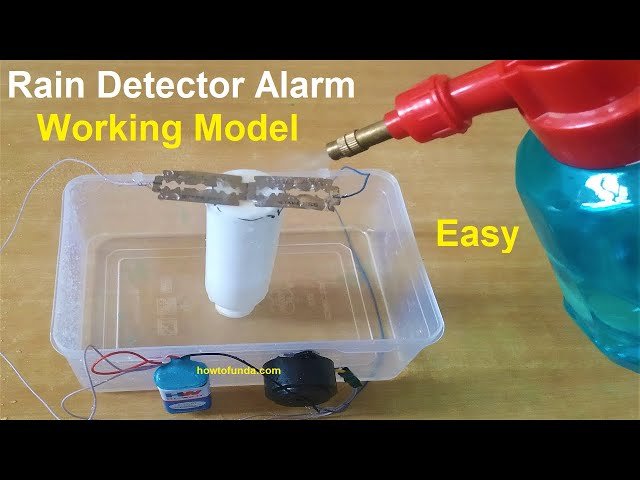A rain alarm is a device that alerts people when it starts raining. This working model demonstrates how a rain alarm works using simple components like metal blades and a 9V battery. It is a practical and educational tool for understanding basic electronics and the concept of conductivity.

Components of the Model
- Metal Blades: Act as rain sensors to detect water.
- 9V Battery: Provides power to the circuit.
- Buzzer: Emits a loud sound to alert when rain is detected.
- Connecting Wires: Connect all components in the circuit.
- Cardboard Base: Holds the setup neatly for demonstration.
How It Works
- Place the metal blades parallel to each other with a small gap between them.
- Connect the metal blades to the circuit, ensuring they are part of the conductive path.
- When rainwater falls on the blades, it creates a conductive path between them, allowing current to flow through the circuit.
- The flow of current activates the buzzer, which produces a loud alarm sound to indicate rain.
Benefits
- Simple and Effective: Easy to build and demonstrates the concept clearly.
- Educational Value: Helps students learn about circuits and the conductivity of water.
- Practical Application: Useful in agriculture and homes to detect rain.
This rain alarm working model is ideal for science exhibitions as it combines creativity and practicality. It highlights the importance of early rain detection and showcases how simple materials can be used to solve real-world problems.

